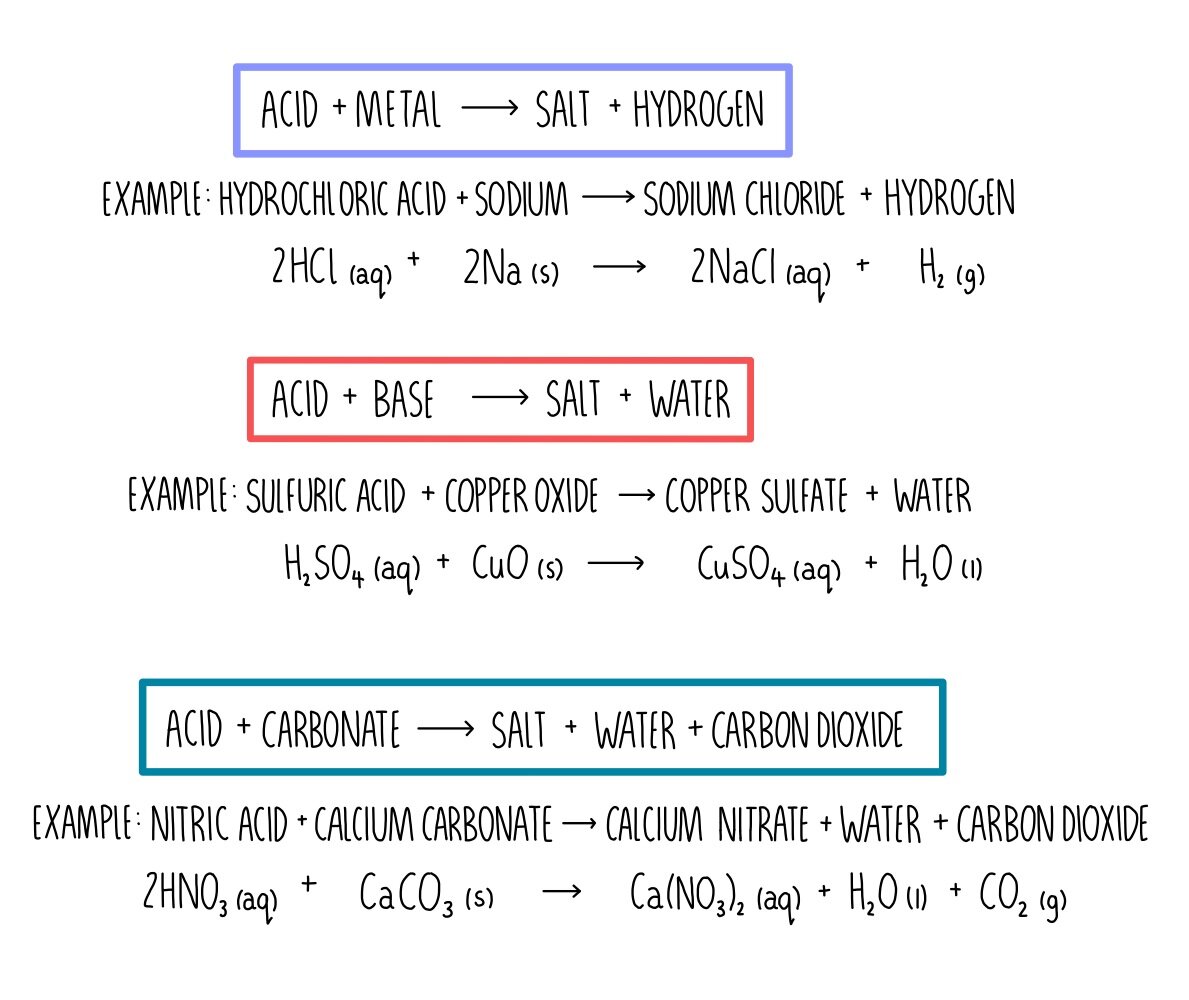
We can think of neutralisation reactions in terms of proton transfer, with an acid ‘giving away’ its proton to a base. Neutralisation reactions can be used to produce different salts.
Acids are a source of hydrogen ions (H + ) which can be neutralised by the hydroxide ions (OH - ) released by alkalis. In essense, what is happening is that a hydrogen ion is being transferred from the acid to the base. In chemistry, we refer to hydrogen ions as protons and we call this behaviour proton transfer. The acid is a proton donor, releasing a proton which is accepted by a base.
You need to know what is formed when an acid reacts with either a metal, a base or a carbonate. Make sure you know each of the general equations in coloured boxes.


A base is a substance that can neutralise acids. Alkalis are bases which are soluble in water. The following substances can act as bases:
The method for preparing a salt depends on whether it is soluble or insoluble. You need to learn the general rules for predicting the solubility of ionic compounds in water, which are included below:
Soluble salts can be prepared by reacting an acid with an insoluble base (usually a metal oxide or metal hydroxide). The method is as follows:

For example, let’s say we want to prepare crystals of the soluble salt magnesium nitrate. To do this I’d use nitric acid and add an excess of solid magnesium oxide to form magnesium nitrate and water. I’d then need to remove the excess magnesium oxide by filtration, cool to allow crystals of magnesium nitrate to form and evaporate to remove the water. I’d then filter, wash and dry the crystals.
The acid that you will use will depend on what salt you want:
Acids react with alkalis to form a salt and water, so we can also use this reaction to prepare a soluble salt. This time we can’t use an excess of one reactant since both of the things we are reacting are solutions and cannot be separated by filtration. Therefore, we need to carry out a titration to work out exactly how much of each reactant is needed so that there is none left over at the end of the reaction. The steps are:
Preparing an insoluble salt is referred to as a precipitation reaction because the solid insoluble salt is called a precipitate. Depending on the insoluble salt you want to make, you just need to select the right soluble salts using the solubility rules discussed earlier on this page.

Let’s say we want to form the insoluble salt silver chloride. We need to select a soluble chloride salt - the only one we can’t choose is lead chloride. So anything like magnesium chloride, sodium chloride, potassium chloride etc will work. Next, we need to select a soluble salt containing silver. We know that all nitrates are soluble so let’s choose silver nitrate. We can then prepare the insoluble silver chloride using the following method: